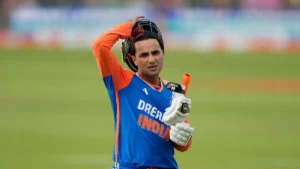Cricket, the national sport of England, has advanced significantly from its inception in the 16th century. Over 2.5 billion people throughout the world now participate in the sport, which was first played by shepherds and farmers in the south-east of England. Cricket has seen a number of changes and evolutions from its inception to the contemporary period, making it one of the most well-liked games in the world.
Origins of Cricket
Cricket first appeared in England in the 16th century, where shepherds and farmers would play it on village greens. Cricket was initially played in 1646 in Kent, and it gained popularity in the 18th century as the aristocracy adopted it and started hosting games on their estates. Around this period, cricket began to take on its current form, with eleven-player teams, teams taking turns batting and fielding, and games lasting a set number of days.
The 19th Century
The 19th century saw significant growth for cricket with the foundation of the Marylebone Cricket Club (MCC) in 1787, the first club in Australia in 1838, and the first international cricket match between Canada and the United States in 1844. At this time, cricket’s laws were also formally established, providing players from all over the world with a common set of rules.
The 20th Century
The International Cricket Council (ICC), which was founded in 1909, the first Test match between England and Australia in 1877, and the introduction of one-day cricket in the 1960s all occurred during the sport’s explosive rise in the 20th century. The 20th century saw the emergence of some of the sport’s top players, such as Don Bradman, Jack Hobbs, and W.G. Grace, as well as the development of unique strategies and techniques that are still used in today’s games.
The Modern Era
Cricket started its modern era with the introduction of the Twenty20 (T20) format, which transformed the sport and made it more approachable to a wider audience. T20 cricket matches lasting three hours have become incredibly popular all around the world, with the Indian Premier League (IPL) and the Big Bash League (BBL) drawing sizable crowds and some of the best players in the world.
The emergence of technology, which has had a considerable impact on how the game is played and officiated, has been one of the largest changes in contemporary cricket. Players can now contest umpire rulings thanks to the Decision Review System (DRS), and the use of Hawk-Eye technology has completely changed how LBW determinations are Made.

The sport’s growing commercialization as a vehicle for sponsorship and advertising has been another notable trend in contemporary cricket. Since its inception in 2008, the IPL has grown to be one of the most lucrative sports leagues in the world, paying its players millions of dollars in salaries and endorsement deals. Even the fans have also become part of the lucrative sport. Today, fans are also earning crores by playing fantasy sports like 1Win in India which is 100% Legal and Safe and follows all the rules.
Despite these modifications, cricket’s fundamental rules have not changed. The bat and ball are still utilised, and success is still determined by ability, strategy, and agility. Cricket is still a sport steeped in tradition, and both players and fans cherish the game’s history and traditions.
Conclusion
Cricket’s evolution from its inception to the present day demonstrates the sport’s enduring appeal and popularity. Cricket has evolved tremendously throughout the years, but its core components of skill, strategy, and athleticism have not. Cricket is still one of the most popular sports in the world, with millions of people worldwide playing and enjoying it. Cricket is a sport that represents the spirit of fair play, competition, and sportsmanship whether played on a village green or in a high-tech stadium, and its ongoing tradition is a testament to the classic sport’s enduring popularity.
Disclaimer: Gambling involves an element of financial risk and may be addictive. Please play responsibly and at your own risk. This post contains material that may or may not be legal in your country. Please play subject to applicable law.






















